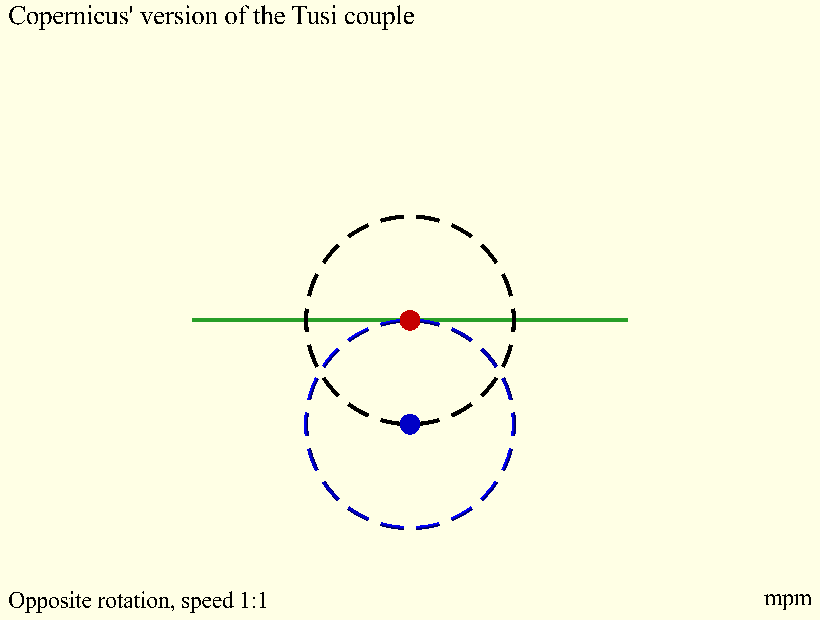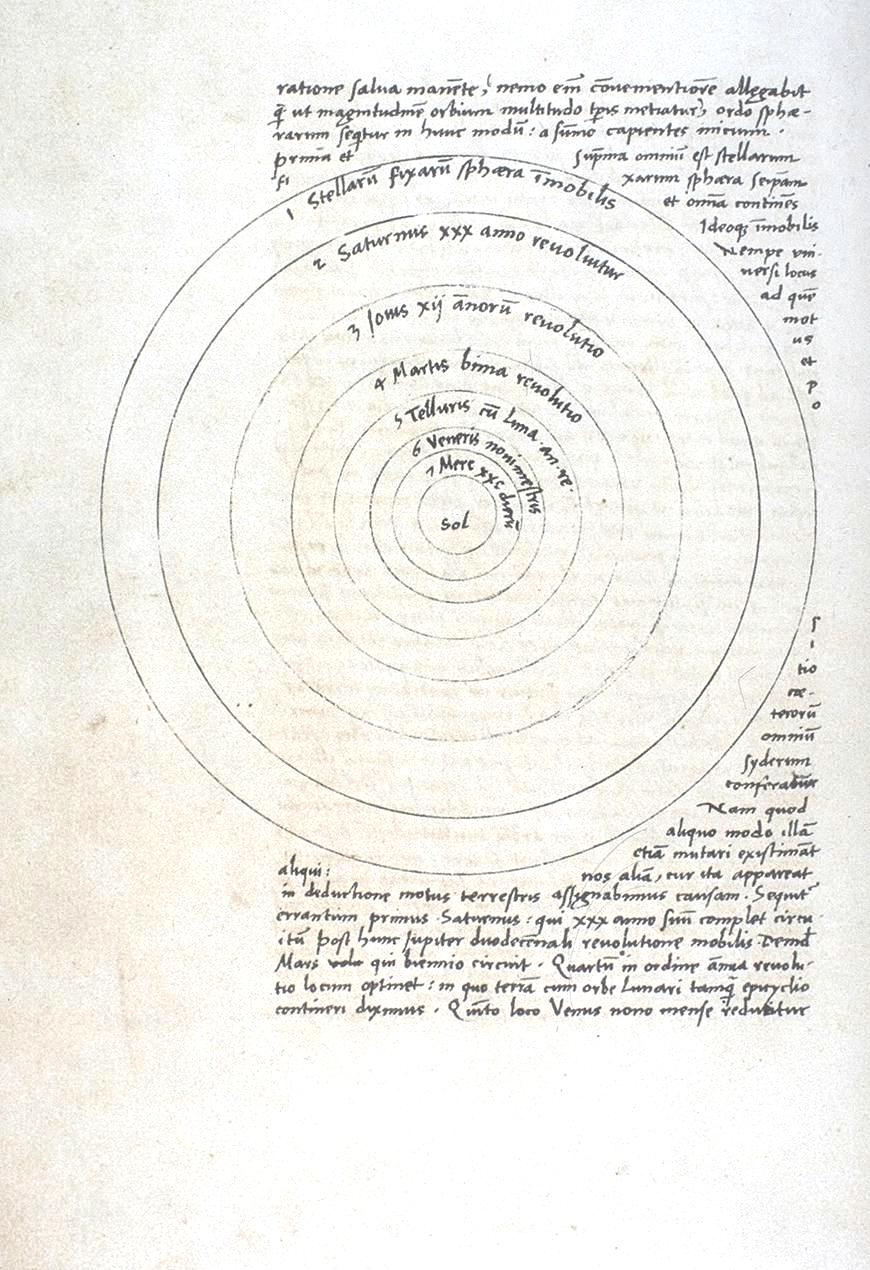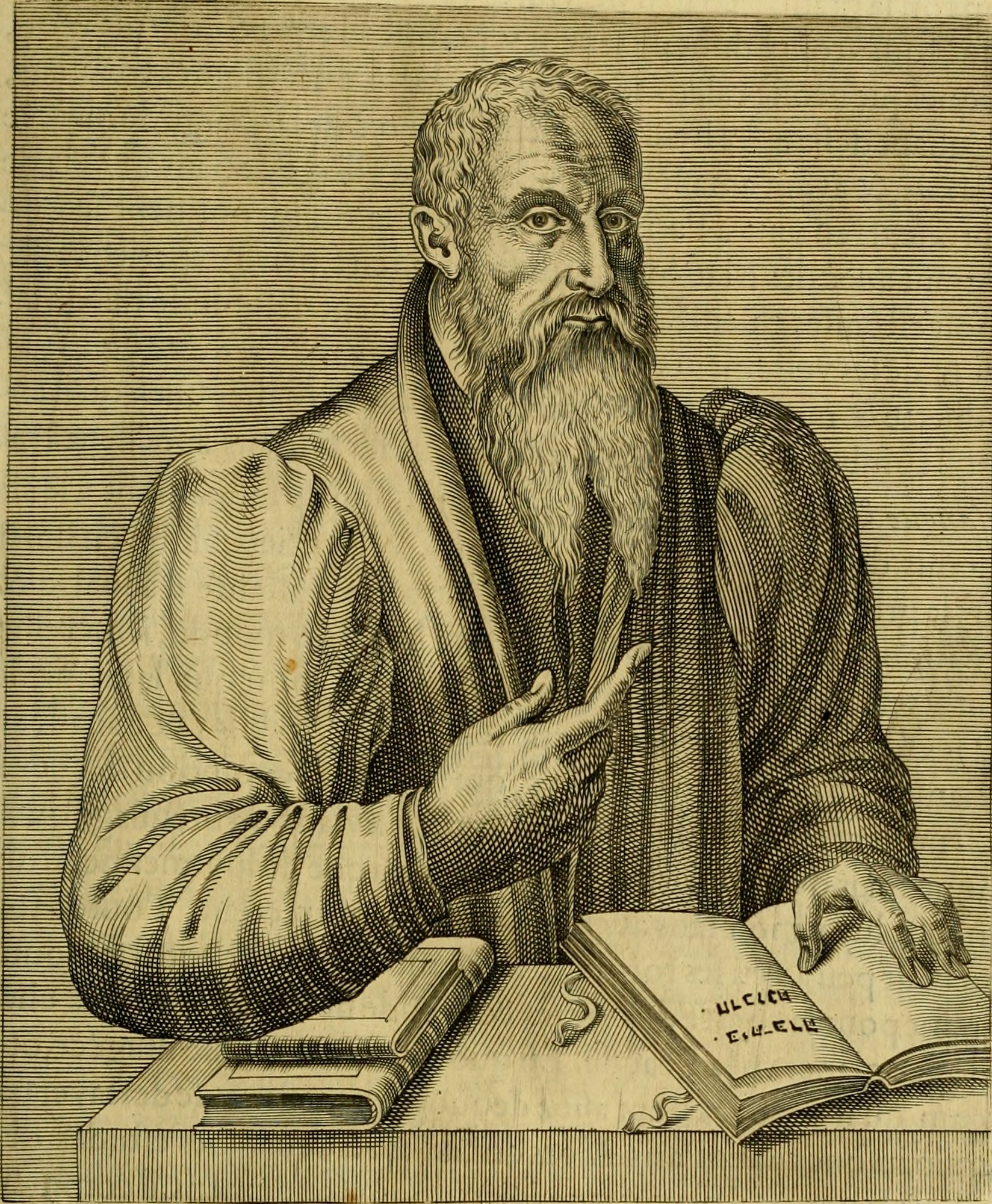|
Tusi-couple
The Tusi couple is a mathematical device in which a small circle rotates inside a larger circle twice the diameter of the smaller circle. Rotations of the circles cause a point on the circumference of the smaller circle to oscillate back and forth in linear motion along a diameter of the larger circle. The Tusi couple is a 2-cusped hypocycloid. The couple was first proposed by the 13th-century Persian astronomer and mathematician Nasir al-Din al-Tusi in his 1247 ''Tahrir al-Majisti (Commentary on the Almagest)'' as a solution for the latitudinal motion of the inferior planets, and later used extensively as a substitute for the equant introduced over a thousand years earlier in Ptolemy's ''Almagest''. Original description The translation of the copy of Tusi's original description of his geometrical model alludes to at least one inversion of the model to be seen in the diagrams: :If two coplanar circles, the diameter of one of which is equal to half the diameter of the othe ... [...More Info...] [...Related Items...] OR: [Wikipedia] [Google] [Baidu] |
Islamic Astronomy
Islamic astronomy comprises the Astronomy, astronomical developments made in the Islamic world, particularly during the Islamic Golden Age (9th–13th centuries), and mostly written in the Arabic language. These developments mostly took place in the Middle East, Central Asia, Al-Andalus, and North Africa, and later in the Far East and History of India, India. It closely parallels the genesis of other Islamic sciences in its assimilation of foreign material and the amalgamation of the disparate elements of that material to create a science with Islamic characteristics. These included Greek astronomy, Greek, Sassanid Empire, Sassanid, and Indian astronomy, Indian works in particular, which were translated and built upon. Islamic astronomy played a significant role in the revival of Byzantine science, Byzantine and Science in Medieval Western Europe, EuropeanSaliba (1999). astronomy following the Dark Ages (historiography), loss of knowledge during the early medieval period, notably ... [...More Info...] [...Related Items...] OR: [Wikipedia] [Google] [Baidu] |
Tusi Couple
The Tusi couple is a mathematical device in which a small circle rotates inside a larger circle twice the diameter of the smaller circle. Rotations of the circles cause a point on the circumference of the smaller circle to oscillate back and forth in linear motion along a diameter of the larger circle. The Tusi couple is a 2-cusped hypocycloid. The couple was first proposed by the 13th-century Persian astronomer and mathematician Nasir al-Din al-Tusi in his 1247 ''Tahrir al-Majisti (Commentary on the Almagest)'' as a solution for the latitudinal motion of the inferior planets, and later used extensively as a substitute for the equant introduced over a thousand years earlier in Ptolemy's ''Almagest''. Original description The translation of the copy of Tusi's original description of his geometrical model alludes to at least one inversion of the model to be seen in the diagrams: :If two coplanar circles, the diameter of one of which is equal to half the diameter of the othe ... [...More Info...] [...Related Items...] OR: [Wikipedia] [Google] [Baidu] |
Nasir Al-Din Al-Tusi
Muhammad ibn Muhammad ibn al-Hasan al-Tūsī ( fa, محمد ابن محمد ابن حسن طوسی 18 February 1201 – 26 June 1274), better known as Nasir al-Din al-Tusi ( fa, نصیر الدین طوسی, links=no; or simply Tusi in the West), was a Persian polymath, architect, philosopher, physician, scientist, and theologian. Nasir al-Din al-Tusi was a well published author, writing on subjects of math, engineering, prose, and mysticism. Additionally, al-Tusi made several scientific advancements. In astronomy, al-Tusi created very accurate tables of planetary motion, an updated planetary model, and critiques of Ptolemaic astronomy. He also made strides in logic, mathematics but especially trigonometry, biology, and chemistry. Nasir al-Din al-Tusi left behind a great legacy as well. Tusi is widely regarded as one of the greatest scientists of medieval Islam, since he is often considered the creator of trigonometry as a mathematical discipline in its own right. The Muslim sch ... [...More Info...] [...Related Items...] OR: [Wikipedia] [Google] [Baidu] |
Nicolaus Copernicus
Nicolaus Copernicus (; pl, Mikołaj Kopernik; gml, Niklas Koppernigk, german: Nikolaus Kopernikus; 19 February 1473 – 24 May 1543) was a Renaissance polymath, active as a mathematician, astronomer, and Catholic Church, Catholic canon (priest), canon, who formulated a mathematical model, model of Celestial spheres#Renaissance, the universe that placed heliocentrism, the Sun rather than Earth at its center. In all likelihood, Copernicus developed his model independently of Aristarchus of Samos, an ancient Greek astronomer who had formulated such a model some eighteen centuries earlier. The publication of Copernicus's model in his book ' (''On the Revolutions of the Celestial Spheres''), just before his death in 1543, was a major event in the history of science, triggering the Copernican Revolution and making a pioneering contribution to the Scientific Revolution. Copernicus was born and died in Royal Prussia, a region that had been part of the Kingdom of Poland (1385� ... [...More Info...] [...Related Items...] OR: [Wikipedia] [Google] [Baidu] |
De Revolutionibus Orbium Coelestium
''De revolutionibus orbium coelestium'' (English translation: ''On the Revolutions of the Heavenly Spheres'') is the seminal work on the heliocentric theory of the astronomer Nicolaus Copernicus (1473–1543) of the Polish Renaissance. The book, first printed in 1543 in Nuremberg, Holy Roman Empire, offered an alternative model of the universe to Ptolemy's geocentric system, which had been widely accepted since ancient times. History Copernicus initially outlined his system in a short, untitled, anonymous manuscript that he distributed to several friends, referred to as the ''Commentariolus''. A physician's library list dating to 1514 includes a manuscript whose description matches the ''Commentariolus'', so Copernicus must have begun work on his new system by that time. Most historians believe that he wrote the ''Commentariolus'' after his return from Italy, possibly only after 1510. At this time, Copernicus anticipated that he could reconcile the motion of the Earth with the ... [...More Info...] [...Related Items...] OR: [Wikipedia] [Google] [Baidu] |
Mercury (planet)
Mercury is the smallest planet in the Solar System and the closest to the Sun. Its orbit around the Sun takes 87.97 Earth days, the shortest of all the Sun's planets. It is named after the Roman god ' ( Mercury), god of commerce, messenger of the gods, and mediator between gods and mortals, corresponding to the Greek god Hermes (). Like Venus, Mercury orbits the Sun within Earth's orbit as an inferior planet, and its apparent distance from the Sun as viewed from Earth never exceeds 28°. This proximity to the Sun means the planet can only be seen near the western horizon after sunset or the eastern horizon before sunrise, usually in twilight. At this time, it may appear as a bright star-like object, but is more difficult to observe than Venus. From Earth, the planet telescopically displays the complete range of phases, similar to Venus and the Moon, which recurs over its synodic period of approximately 116 days. The synodic proximity of Mercury to Earth makes Mercury most ... [...More Info...] [...Related Items...] OR: [Wikipedia] [Google] [Baidu] |
Trepidation
Trepidation (from Lat. ''trepidus'', "trepidatious"), in now-obsolete medieval theories of astronomy, refers to hypothetical oscillation in the precession of the equinoxes. The theory was popular from the 9th to the 16th centuries. The origin of the theory of trepidation comes from the ''Small Commentary to the Handy Tables'' written by Theon of Alexandria in the 4th century CE. In precession, the equinoxes appear to move slowly through the ecliptic, completing a revolution in approximately 25,800 years (according to modern astronomers). Theon states that certain (unnamed) ancient astrologers believed that the precession, rather than being a steady unending motion, instead reverses direction every 640 years. The equinoxes, in this theory, move through the ecliptic at the rate of 1 degree in 80 years over a span of 8 degrees, after which they suddenly reverse direction and travel back over the same 8 degrees. Theon describes but did not endorse this theory. A more sophisticated v ... [...More Info...] [...Related Items...] OR: [Wikipedia] [Google] [Baidu] |
Guillaume Postel
Guillaume Postel (25 March 1510 – 6 September 1581) was a French people, French linguist, astronomer, Christian Kabbalah, Christian Kabbalist, diplomat, polyglot, professor, Religious universalism, religious universalist, and writer. Born in the village of Barenton in Normandy, Postel made his way to Paris to further his education. While studying at the Collège Sainte-Barbe, he became acquainted with Ignatius of Loyola and many of the men who would become the founders of the Society of Jesus, retaining a lifelong affiliation with them. He entered Rome in the novitiate of the Jesuits in March 1544, but left on December 9, 1545 before making religious vows. Diplomacy and scholarship Postel was adept at Arabic language, Arabic, Hebrew language, Hebrew, and Syriac language, Syriac and other Semitic languages, as well as the Classical languages of Ancient Greek and Latin, and soon came to the attention of the Kingdom of France (1498-1791), French court. Travel to the Ottoman Empi ... [...More Info...] [...Related Items...] OR: [Wikipedia] [Google] [Baidu] |
Tusi By Copernicus 90x20
''Tusi'', often translated as "headmen" or "chieftains", were hereditary tribal leaders recognized as imperial officials by the Yuan, Ming, and Qing dynasties of China, and the Later Lê and Nguyễn dynasties of Vietnam. They ruled certain ethnic minorities in southwest China and the Indochinese peninsula nominally on behalf of the central government. This arrangement is known as the ''Tusi System'' or the ''Native Chieftain System'' (). It should not to be confused with the Chinese tributary system or the Jimi system. ''Tusi'' were located primarily in Yunnan, Guizhou, Tibet, Sichuan, Chongqing, the Xiangxi Prefecture of Hunan, and the Enshi Prefecture of Hubei. ''Tusi'' also existed in the historical dependencies of China in what is today northern Myanmar, Laos, and northern Thailand. Vietnam also implemented a ''Tusi'' system under the Later Lê and Nguyễn dynasties. In 2015, UNESCO designated three ''Tusi'' castles (Laosicheng, Tangya, and Hailongtun) as part of ... [...More Info...] [...Related Items...] OR: [Wikipedia] [Google] [Baidu] |
George Saliba
George Saliba (Arabic: جورج صليبا) is a Lebanese-American Professor of Arabic and Islamic Science at the Department of Middle Eastern, South Asian, and African Studies, Columbia University, New York, USA, where he has been since 1979. Saliba is currently the founding director of the Farouk Jabre Center for Arabic & Islamic Science & Philosophy and the Jabre-Khwarizmi Chair in the History Department. Career Saliba has been at Columbia University since 1979. He received a bachelors and master's degree in mathematics from the American University of Beirut. After, he received a master of science degree in Semitic languages and a doctorate in Islamic sciences from the University of California at Berkeley. He has won the History of Science Prize given by the Third World Academy of Science in 1993, and the History of Astronomy Prize in 1996 from the Kuwait Foundation for the Advancement of Science. In 2005 he was named as a Senior Distinguished Scholar at the John W. Kluge C ... [...More Info...] [...Related Items...] OR: [Wikipedia] [Google] [Baidu] |
Byzantine Science
Byzantine science played an important role in the transmission of classical knowledge to the Islamic world and to Renaissance Italy, and also in the transmission of Islamic science to Renaissance Italy. Its rich historiographical tradition preserved ancient knowledge upon which splendid art, architecture, literature and technological achievements were built. Byzantines stood behind several technological advancements. Classical and ecclesiastical studies Byzantine science was essentially classical science. Therefore, Byzantine science was in every period closely connected with ancient-pagan philosophy and metaphysics. Despite some opposition to pagan learning, many of the most distinguished classical scholars held high office in the Church. The writings of antiquity never ceased to be cultivated in the Byzantine Empire because of the impetus given to classical studies by the Academy of Athens in the 4th and 5th centuries, the vigor of the philosophical academy of Alexandria, and ... [...More Info...] [...Related Items...] OR: [Wikipedia] [Google] [Baidu] |







